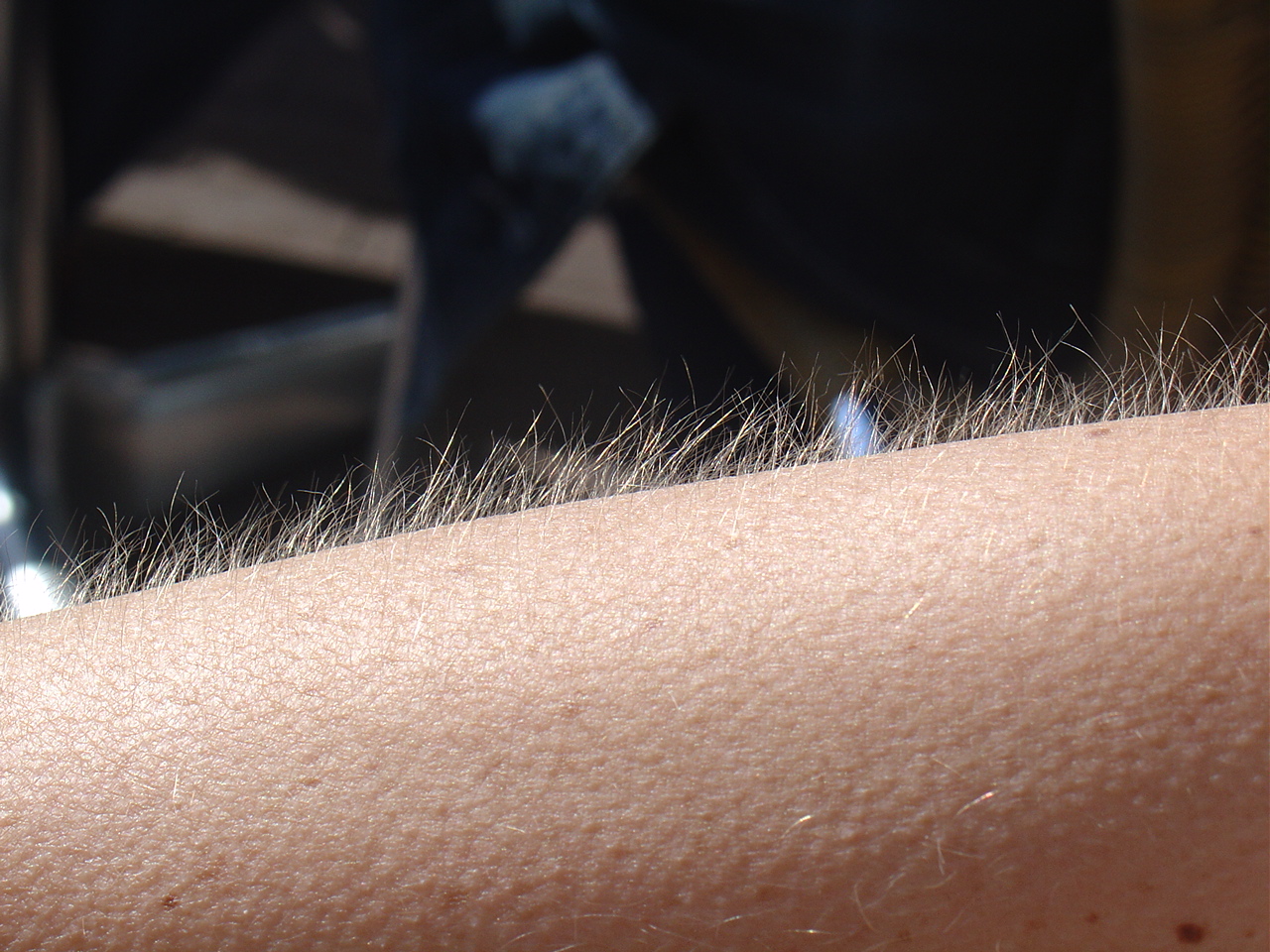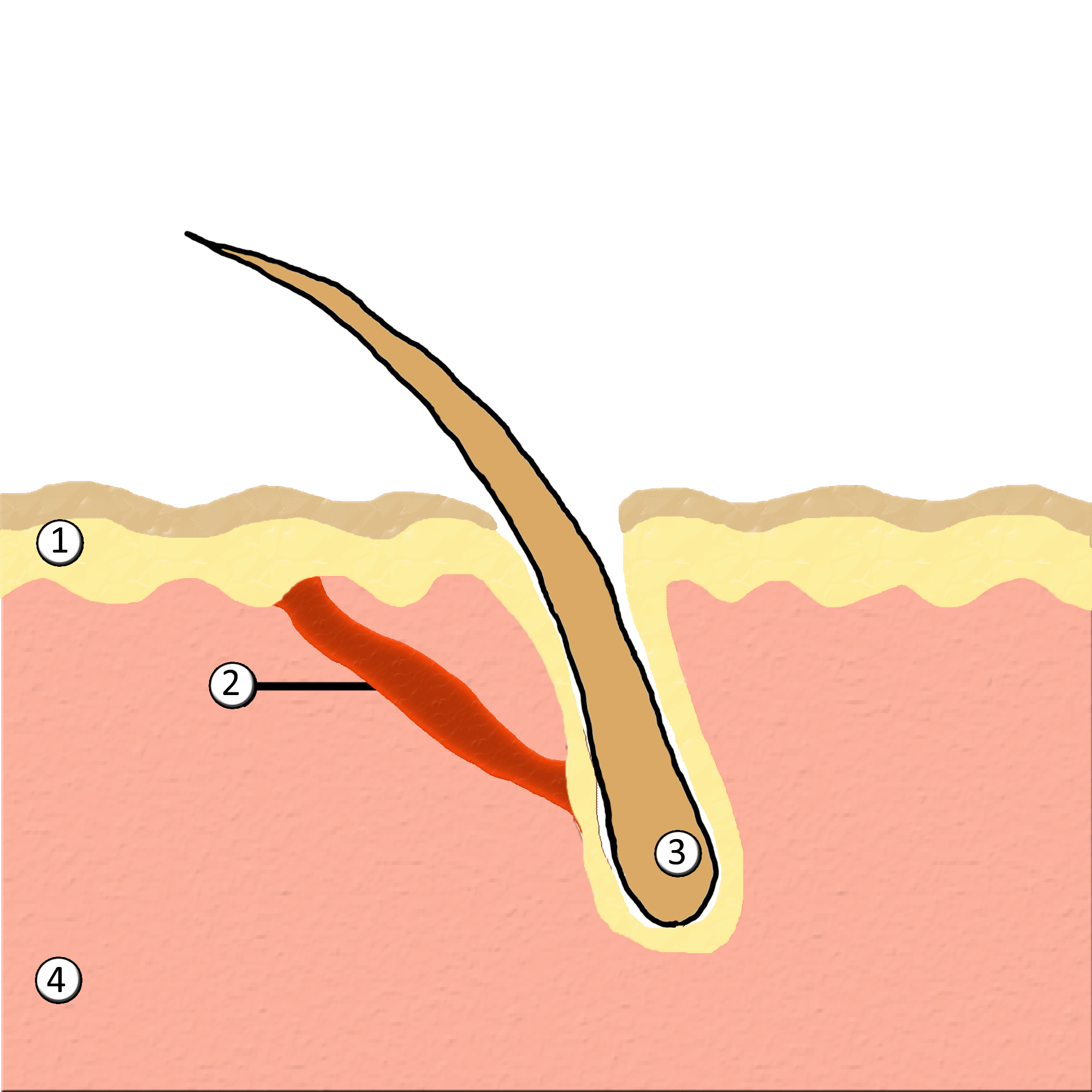 |
Cold Chill
A cold chill (also known as chills, the chills or simply thrills) is described by David Huron as, "a pleasant tingling feeling, associated with the flexing of hair follicles resulting in goose bumps (technically called piloerection), accompanied by a cold sensation, and sometimes producing a shudder or shiver." Cold chills are a purely subjective response and, unlike piloerection, no objective physiological measure of cold chills exists. Unlike shivering, however, it is not caused by temperature, but rather is an emotionally triggered response when one is deeply affected by things such as music, speech, or recollection. It is similar to autonomous sensory meridian response; both sensations consist of a pleasant tingling feeling that affects the skin on the back of the neck and spine. However, cold chills should not be confused with piloerection. Recent research has shown that self-reported chills do not correspond with observable piloerection, suggesting that they are independent ... [...More Info...] [...Related Items...] OR: [Wikipedia] [Google] [Baidu] |
 |
Goose Bumps
Goose bumps, goosebumps or goose pimples are the bumps on a person's skin at the base of body hairs which may involuntarily develop when a person is Tickling, tickled, cold or experiencing strong emotions such as fear, euphoria or sexual arousal. The formation of goose bumps in humans under Stress (medicine), stress is considered by some to be a Vestigial response, vestigial reflex, though visible piloerection is associated with changes in skin temperature in humans. The reflex of producing goose bumps is known as piloerection or the pilomotor reflex, or, more traditionally, horripilation. It occurs in many mammals; a prominent example is porcupines, which raise their quills when threatened, or sea otters when they encounter sharks or other predators. Anatomy and biology Goose bumps are created when tiny muscles at the base of each hair, known as ''arrector pili muscles'', contract and pull the hair straight up. The reflex is started by the sympathetic nervous system, which i ... [...More Info...] [...Related Items...] OR: [Wikipedia] [Google] [Baidu] |
|
Shivering
Shivering (also called shuddering) is a bodily function in response to cold and extreme fear in warm-blooded animals. When the core body temperature drops, the shivering reflex is triggered to maintain homeostasis. Skeletal muscles begin to shake in small movements, creating warmth by expending energy. Shivering can also be a response to fever, as a person may feel cold. During fever, the hypothalamic set point for temperature is raised. The increased set point causes the body temperature to rise ( pyrexia), but also makes a person feel cold until the new set point is reached. Biological basis Located in the posterior hypothalamus near the wall of the third ventricle is an area called the primary motor center for shivering. This area is normally inhibited by signals from the heat center in the anterior hypothalamic-preoptic area but is excited by cold signals from the skin and spinal cord and becomes activated when the body temperature falls even a fraction of a degree below ... [...More Info...] [...Related Items...] OR: [Wikipedia] [Google] [Baidu] |
|
 |
Autonomous Sensory Meridian Response
An autonomous sensory meridian response (ASMR)Marsden, Rhodri (20 July 2012), ''The Independent''. is a tingling sensation that usually begins on the scalp and moves down the back of the neck and upper Vertebral column, spine. A pleasant form of paresthesia, it has been compared with Synesthesia#Auditory–tactile synesthesia, auditory-tactile synesthesia and may overlap with frisson. ASMR is a subjective experience of "low-grade euphoria" characterized by "a combination of positive feelings and a distinct Noise (video), static-like tingling sensation on the skin". It is most commonly triggered by specific auditory stimuli, and less commonly by intentional attention control and visual stimuli. The term ASMR can also refer to media (usually audiovisual) meant to evoke this phenomenon, with the sensation itself being informally referred to as "tingles". Etymology Although many colloquial and formal terms used and proposed between 2007 and 2010 included reference to orgasm, a sig ... [...More Info...] [...Related Items...] OR: [Wikipedia] [Google] [Baidu] |
|
Chills
Chills is a feeling of coldness occurring during a high fever, but sometimes is also a common symptom which occurs alone in specific people. It occurs during fever due to the release of cytokines and prostaglandins as part of the inflammatory response, which increases the set point for body temperature in the hypothalamus. The increased set point causes the body temperature to rise ( pyrexia), but also makes the patient feel cold or chills until the new set point is reached. Shivering also occurs along with chills because the patient's body produces heat during muscle contraction in a physiological attempt to increase body temperature to the new set point. When it does not accompany a high fever, it is normally a light chill. Sometimes a chill of medium power and short duration may occur during a scare, especially in scares of fear, commonly interpreted like or confused by trembling. Severe chills with violent shivering are called rigors. Pathophysiology Chills occur w ... [...More Info...] [...Related Items...] OR: [Wikipedia] [Google] [Baidu] |
|
 |
Autonomous Sensory Meridian Response
An autonomous sensory meridian response (ASMR)Marsden, Rhodri (20 July 2012), ''The Independent''. is a tingling sensation that usually begins on the scalp and moves down the back of the neck and upper Vertebral column, spine. A pleasant form of paresthesia, it has been compared with Synesthesia#Auditory–tactile synesthesia, auditory-tactile synesthesia and may overlap with frisson. ASMR is a subjective experience of "low-grade euphoria" characterized by "a combination of positive feelings and a distinct Noise (video), static-like tingling sensation on the skin". It is most commonly triggered by specific auditory stimuli, and less commonly by intentional attention control and visual stimuli. The term ASMR can also refer to media (usually audiovisual) meant to evoke this phenomenon, with the sensation itself being informally referred to as "tingles". Etymology Although many colloquial and formal terms used and proposed between 2007 and 2010 included reference to orgasm, a sig ... [...More Info...] [...Related Items...] OR: [Wikipedia] [Google] [Baidu] |
 |
Frisson
Frisson ( , ; French for "shiver"), also known as aesthetic chills or psychogenic shivers, is a psychophysiological response to rewarding stimuli (including music, films, stories, people, photos, and rituals) that often induces a pleasurable or otherwise positively-valenced affective state and transient paresthesia (skin tingling or chills), sometimes along with piloerection (goose bumps) and mydriasis (pupil dilation). The sensation can occur as a mildly to moderately pleasurable emotional response to music with skin tingling. The psychological component (i.e., the pleasurable feeling) and physiological components (i.e., paresthesia, piloerection, and pupil dilation) of the response are mediated by the reward system and sympathetic nervous system, respectively. The stimuli that produce this response are specific to each individual. Frisson is of short duration, lasting only a few seconds. Typical stimuli include loud passages of music and passages—such as appoggiatur ... [...More Info...] [...Related Items...] OR: [Wikipedia] [Google] [Baidu] |